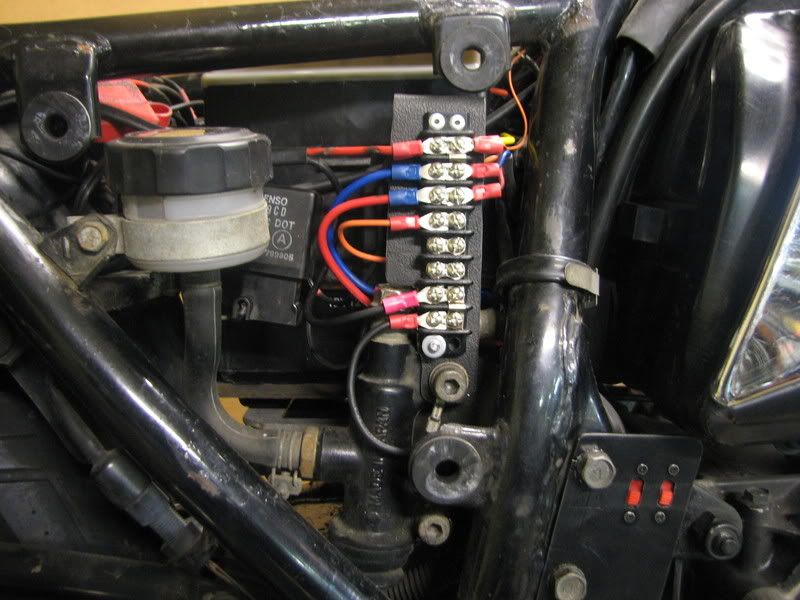I will tell you how the original wiring diagram shows it wired in.
2X w/r going to the main power on the fuse box
2X b going to a ground point
1X br going to ignition wire(switched)
3X Y going to the stator
Here is how I hooked it up
2X w/r going to the + on battery
2X b going to the - on battery
1X br going to the br on the taillight
3X Y going to the stator
Start up the bike and it charges 16.5V.
 Shut off bike.
Shut off bike.
Change the wiring
1X br going to the + o battery
Start up bike and it charges at 14.55V from 1500rpm up to redline.

Change wire back to switched wire on bike, now orange on ignition
Get 16.5V
Change wire back to battery 14.55V up to 14.6V no higher.

Wired in a relay that energizes when the key is on to complete the circuit to the + battery post for the brown. Get 14.55V at the battery
Now what I am thinking is that I am losing too much power in the wiring harnes and the r/r then puts out 16V to get 14V at that point.
So, by using a relay to energize that brown sensor wire, am I risking setting everything on fire or burning things up. I don't think so, but I want to know what the experts thinks since electrical is my achilles heel.
.png)






Comment